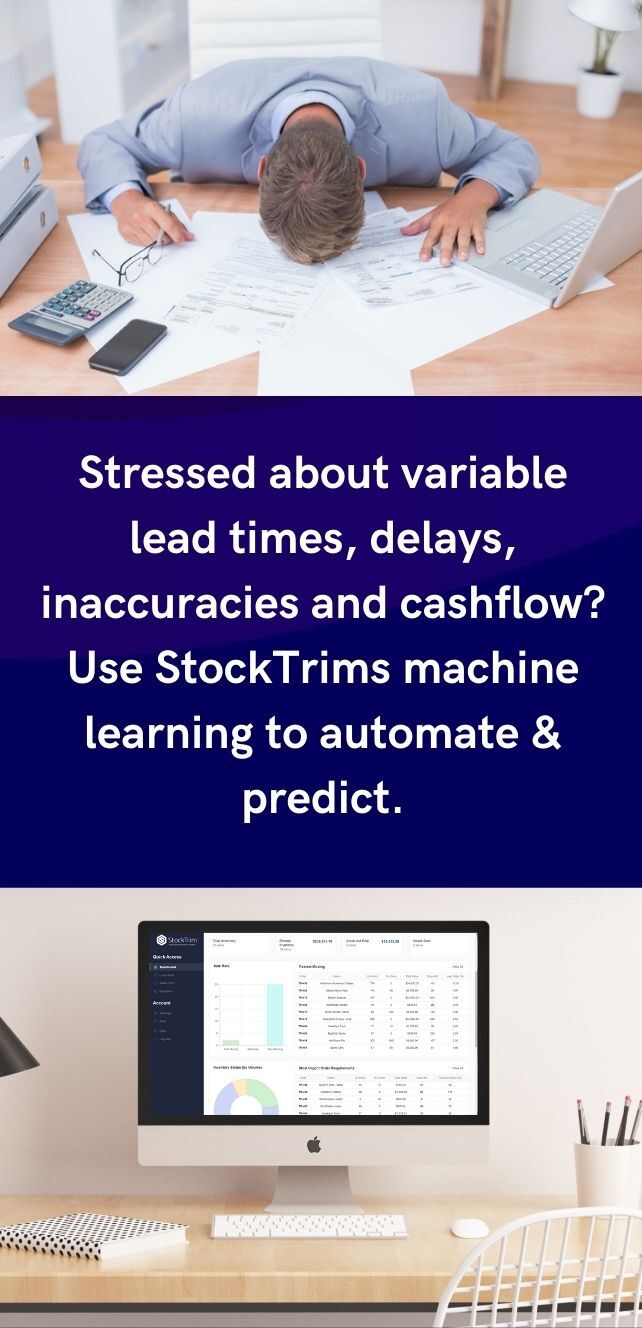In this article:
-
The Difference Between Inventory Planning & Demand Forecasting?
- Definition of Demand Forecasting
- Types of Demand Forecasting
- Definition of Inventory Planning
- Effective Forecasting and Planning
- Challenges in Demand Forecasting and Inventory Planning
- Leveraging Technology for Better Outcomes
What is the Difference Between Inventory Planning & Demand Forecasting?
In business, you may encounter people who use the terms inventory planning and demand forecasting interchangeably. While the two terms and ideas are heavily related, and there is plenty of overlap, they aren’t actually the same thing.
Understanding the subtle differences between the two can help keep business running smoothly, ensure you have just the right amount of stock, and prepare for business growth.
So, if you’ve ever been confused by the two terms or perhaps you thought they were the same thing, here’s what you need to know.
Demand Forecasting
To put it as simply as possible, demand forecasting is a prediction. A business will examine previous trends, seasonal demand, customer expectations, upcoming marketing campaigns, and market research to predict how much will be sold in the coming weeks and months.
Demand forecasting encompasses much more than inventory and stock levels. This prediction will be used to determine the marketing budget, stock levels, how many employees are needed each day, and much more. The demand forecast will form the basis of a business plan to meet demand and improve profitability.
Think of demand forecasting as a very proactive step. It involves anticipating customer demand based on various factors like historical data, market conditions, economic indicators, and competitive analysis. Businesses might use different forecasting methods such as qualitative forecasting (relying on expert opinions) or quantitative forecasting (using statistical data and models) to predict future sales. Accurate demand forecasting helps businesses reduce the risk of overproduction, minimize stockouts, and optimize their resource allocation.
Types of Demand Forecasting
Qualitative Forecasting: This method relies on expert judgment and market research. It’s particularly useful when there’s a lack of historical data, such as for new products. Techniques include the Delphi method, market research, and focus groups.
Quantitative Forecasting: This approach uses historical data to predict future demand. Techniques include time series analysis, causal models, and trend projection. This method is effective when past sales data is reliable and trends are relatively stable.
Short-term vs. Long-term Forecasting: Short-term forecasting focuses on periods from a few weeks to a few months and is crucial for day-to-day operations like replenishing stock. Long-term forecasting looks at periods beyond a year, helping businesses plan for capacity expansion, market entry, and strategic investments.

Inventory Planning
On the other hand, inventory planning is much more reactive. It’s still proactive in that it needs to be done in advance, but inventory planning means looking at the forecast and deciding how much stock to order and when. When inventory planning, you will need to consider the entire product lifecycle as well as the whole supply chain to make sure everything runs smoothly.
Inventory planning is more about the practical aspects of managing stock. You must consider factors such as demand, warehouse space, cost of additional storage, returns and resales, build-time, shipping time, and much more. It requires analyzing how goods move through the supply chain from suppliers to warehouses and, ultimately, to customers. Effective inventory planning helps in minimizing holding costs, reducing waste, and ensuring that products are available when customers need them.
Key Elements of Inventory Planning:
Reorder Point (ROP): This is the level of inventory at which a new order should be placed to replenish stock before it runs out. The ROP is determined based on lead times, demand variability, and safety stock levels.
Safety Stock: Extra inventory is held to prevent stockouts due to uncertainties in demand or supply. It acts as a buffer against unexpected spikes in demand or delays in delivery.
Economic Order Quantity (EOQ): EOQ is a formula used to determine the optimal order size that minimizes the total costs of ordering and holding inventory. It helps in balancing the trade-off between ordering frequently and holding large quantities of stock.
Just-in-Time (JIT): JIT is an inventory strategy where materials are ordered and received only as they are needed in the production process, reducing inventory holding costs. However, it requires highly reliable suppliers and accurate demand forecasts.
Effective Forecasting and Planning
On some level, every business engages in both forecasting and planning. The only question is how detailed and effective a business is. Since much of inventory planning and stock management relies on effective demand forecasting, many companies choose to focus resources in this area. However, this can result in proper inventory planning being overlooked, leading to production mistakes, storage issues, and lack of stock.
On the other hand, some businesses spend lots of money on forecasting, but due to a lack of focus or using the wrong tools, they end up with flawed conclusions. This can also impact inventory planning as it becomes impossible to plan for unknown events and changes in demand.
Both effective forecasting and planning are needed for a business to run smoothly and meet customer demands. Businesses that excel in both areas tend to have a competitive advantage, as they can respond more quickly to market changes, optimize their operations, and maintain higher levels of customer satisfaction.
Challenges in Demand Forecasting and Inventory Planning
Data Quality and Availability: Accurate forecasting requires high-quality data. Incomplete or inaccurate data can lead to poor predictions and suboptimal inventory levels.
Demand Variability: Changes in consumer preferences, economic conditions, or unexpected events (like natural disasters or pandemics) can make demand forecasting challenging.
Lead Time Variability: Differences in supplier lead times can complicate inventory planning. Delays or variations in lead times require businesses to adjust their safety stock levels and reorder points.
Technology Integration: Integrating various technological tools for forecasting and planning can be challenging. Ensuring that systems communicate effectively and provide real-time data is crucial for accurate decision-making.
Getting Forecasting and Planning Right
Since so much rests on effective demand forecasting and inventory planning, it is crucial to make sure you are using appropriate tools and getting it right. One mistake can impact all areas of business for months. The foundation of both predicting demand and preparing to meet those demands is data.
Ideally, you should use software that tracks, stores, and analyzes data, including sales, seasonal trends, returns, market demand, and your stock levels. The more historical data and market research a business has, the better informed it can be. Automating the process and relying on algorithms to accurately make forecasts and let you know how to plan is an easy way for businesses to get both the forecasting and planning right every time.
Leveraging Technology for Better Outcomes
With advancements in technology, businesses can use sophisticated software and tools to enhance their demand forecasting and inventory planning processes. Artificial intelligence (AI) and machine learning (ML) algorithms can analyze large datasets to identify patterns and trends that humans might overlook. Integrated Enterprise Resource Planning (ERP) systems help in synchronizing inventory management with other business functions, providing real-time insights and facilitating better decision-making.
By investing in the right technologies and continuously refining forecasting and planning strategies, businesses can reduce costs, improve efficiency, and better meet customer demands, ultimately driving growth and profitability.



